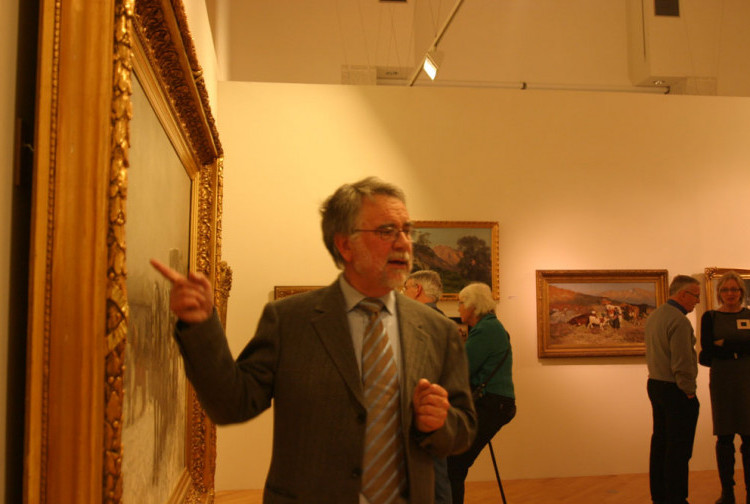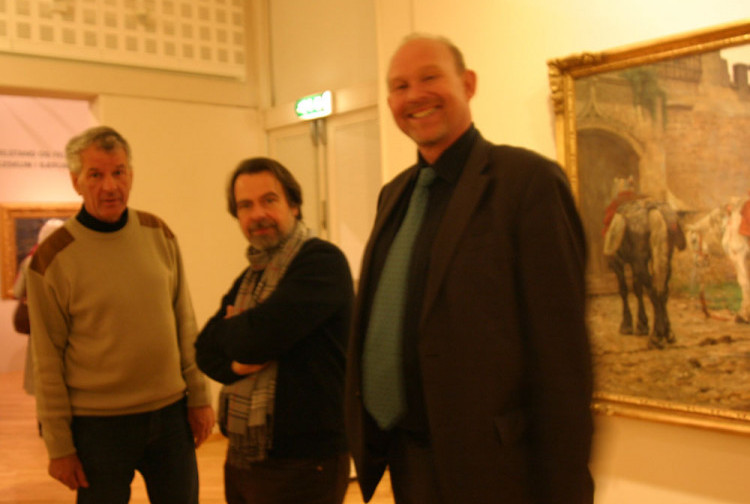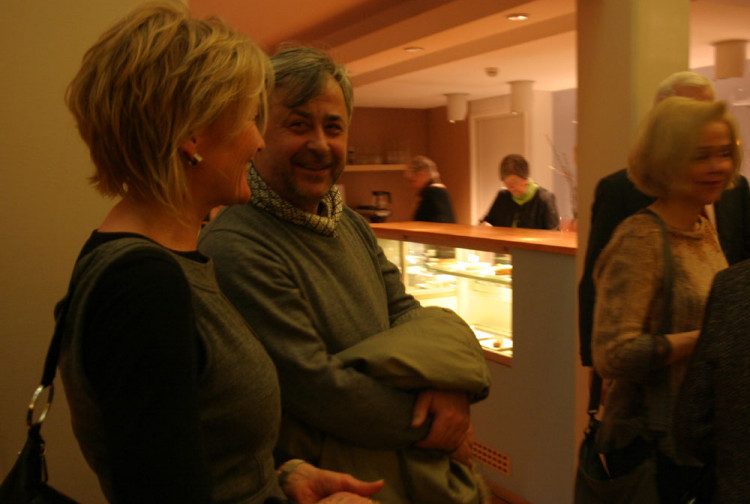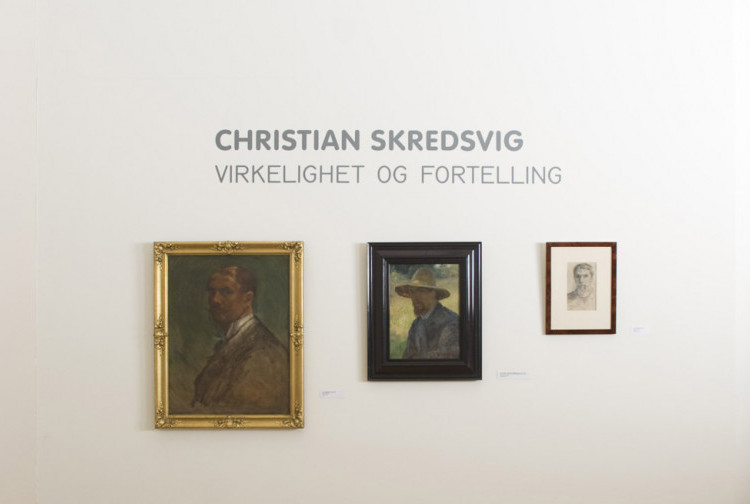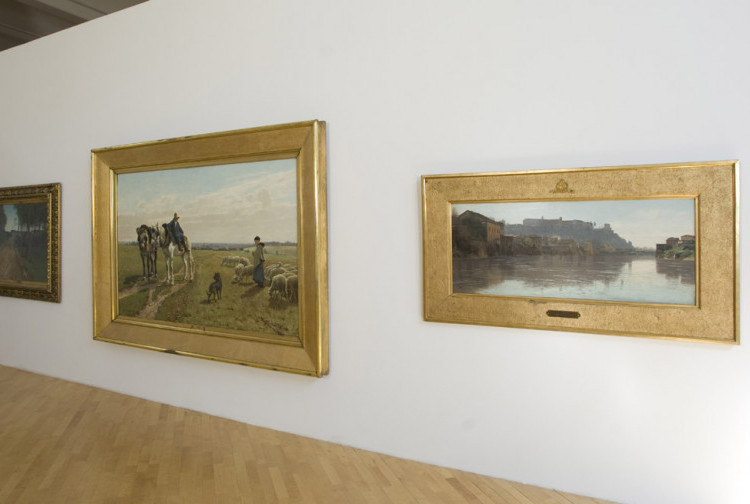Christian Skredsvig
Christian Skredsvig was born in Modum in 1854. He was 15 years old when he moved to Kristiania to start at the Royal School of Drawing and Art.
Here and at Eckersberg's painting school, he received basic drawing lessons and made lifelong friendships with the artists who became the foremost of his generation, Eilif Peterssen, Erik Werenskiold, Gerhard Munthe and Theodor Kittelsen.
After almost a year in Kristiania, Eckersberg died and Skredsvig continued his education in Copenhagen. He got accommodation with the landscape painter Vilhelm Kyhn who let him participate in the so-called "Cave Academy" in his garden, where leading Danish artists designed according to a living model. At the same time, he was taught in the perspective class at the Technical Institute and eventually at the Academy of Fine Arts. Like Eckersberg, Kyhn placed great emphasis on study trips, and Skredsvig traveled in both Denmark and Norway during the summers.
In 1874, at the age of 20, Skredsvig traveled to Paris. He himself writes that it was a sad winter. In the spring of 1875 he sent a painting to the Salon, and it was rejected. He now traveled to Munich where most Norwegian artists were. Skredsvig did not become a student at the art academy here. Now he decided to specialize as an animal painter, that is, animal-in-landscape motifs. For the next 3 years (1875-1878) he stayed in Munich, where he was a student of the animal painter H. Zügel. Like his former teachers Eckersberg and Kyhn, Skredsvig worked in the studio in Munich on studies he had made on his way home in the summer. Returning from the farm is his first large-scale painting. The goal was Norwegian landscapes with animals and patching up shepherds and farm girls.
In 1879, Skredsvig traveled again to Paris, where he more or less lived for five years. There were studies at Léon Bonnat's painting school and studies of animal painter E. v. Marcke de Lummen. Now, like contemporary artists, he became interested in outdoor painting and realism. He got Snowmobiling at the Seine supposed at the Salon in 1880, and in the years that followed he got several big pictures there. Skredsvig lived and had a studio on Montmarte.
SNOW RIDING BY THE SEIN, 1880
The summer of 1880 Skredsvig spent in Normandy. One of the results was the great composition Une Ferme à Venoix, which was awarded a gold medal at the Salon in 1881.
Next summer, Skredsvig was back in Normandy where he completed the motif Ballade. That same autumn he painted in Grez, France. Illness brought him as a convalescent to Seville in Spain where he painted with the Swedish painter Ernst Josephson.
In 1882, the 28-year-old Skredsvig married the 19-year-old Maggie Plathe. With financial support from her wealthy parents, their honeymoon went to Rome, where they lived for almost half a year. Here, Skredsvig painted the motif Monte Aventino, which he exhibited at the Salon together with Oktobermorgen, Grez.
OCTOBER MORNING, GREZ
In 1885, the couple moved home to Norway and settled on the farm Fleskum in Bærum. In the summer of 1886, the artist friends gathered on the farm, Werenskiold, Peterssen, Munthe, Kitty Kielland and Harriet Backer. He himself, Kielland and Peterssen worked mostly with water as a motif, as he had begun in Rome. Skredsvig's large project this Fleskum summer, a boat gliding over Dælivannet, was entitled Sankthansaften.
In 1888, the couple Skredsvig traveled to Eggedal together with, among others, Harriet Backer and Gerhard Munthe. In the motif Idyll, we are moved close to a large figure by a man who lets his cat play with the tip of his shoe.
In the years 1887-1889, Skredsvig completed main works such as Vinje's childhood home, Menneskenes Søn, Idyll and Seljefløyten. In the winter of 1891- 1892, the couple Maggie and Christian Skredsvig lived with Edvard Munch on the French Riviera. Several of the paintings that Skredsvig painted here are characterized by a pastel-like color in dull evening light, delicate turquoise and delicate red-pink. Evening on the Riviera is marked by that color combination.
At the autumn exhibition in 1892, Skredsvig showed Aften on the lake. Golden clouds along with 10 other paintings with poetic titles. Skredsvig's wife Maggie is depicted sitting in a boat on Dælivannet at dusk.
In June 1893, Skredsvig lived at the bus station in Sigdal. Here Skredsvig painted On wild grass, based on a childhood memory.
In 1894, the separation from Maggie Plathe was a fact. Skredsvig lost its resources and the large studio at Fleskum. Now he moved to Eggedal where he eventually bought the place "Hagan" and built a house. In 1895 he started on the motif Ola Velland, which he was to paint in several versions.
After finally being granted a divorce, Skredsvig was able in 1898 to marry the young girl from Eggedal, Beret Knudsdatter, who was his girlfriend. They had four children. Hagan was located high up in the valley side with a wide view of the mountains Andersnatten and Sigdal. Skredsvig painted a number of motifs from the landscape around Hagan, the motif Jupsjøen represents a water that he bought both to paint and fish in.
JUPSJØEN, 1904
Hamsun's poetry from 1905 is an example of a composition that Skredsvig bases on a literary source. In addition, he painted large religious motifs and purely decorative decorations as in the National Theater. Throughout the 20th century, Skredsvig published several books that came in many editions. He became a popular communicator of Norwegian nature and folk life.
Christian Skredsvig died in his home Hagan in 1924.
Einar Sørensen
Chief Conservator
The publication Christian Skredsvig, Reality and storytelling is available for purchase in the museum shop in the Lyche pavilion.
Venue
Monday to Friday 11.00 - 15.00
Wednesday 11.00 – 18.00
Saturday 11.00 – 16.00 (free admission)
Sunday 11.00 – 16.00

